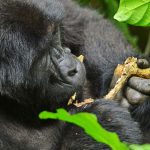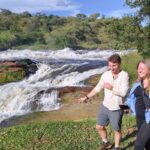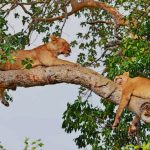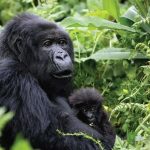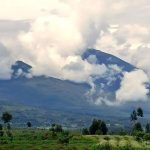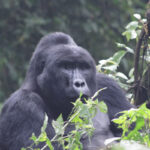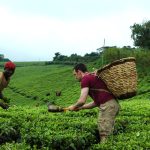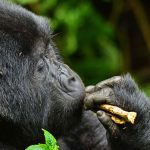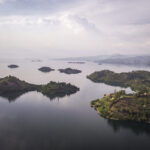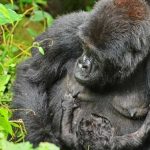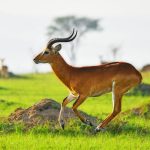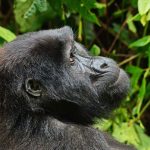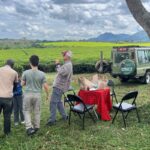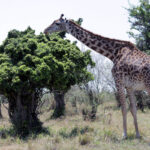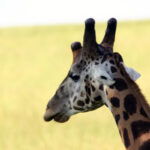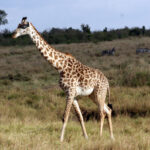What is the Great Migration, and When Does It Happen in the Masai Mara?
When Does Great Migration Happen in the Masai Mara? The Great Migration is one of the most extraordinary natural events in the world, a dramatic and awe-inspiring phenomenon where millions of animals embark on a perilous journey across the African savannah. This annual migration, particularly famous in the Masai Mara National Reserve in Kenya, involves the movement of over 1.5 million wildebeest, along with hundreds of thousands of zebras, gazelles, and other herbivores, from the Serengeti National Park in Tanzania to the Masai Mara. The migration is driven by the animals’ instinct to follow fresh grazing and water, making it a spectacle of nature that has captivated travelers, wildlife enthusiasts, and photographers for decades. This article delves into the intricacies of the Great Migration, its timing, and its significance to both the animals and the Masai Mara ecosystem.
The Animals Involved in the Great Migration
The primary species involved in the Great Migration are the wildebeest (also known as the gnu), zebras, and Thomson’s gazelles, though other herbivores like impalas, Grant’s gazelles, and waterbucks also participate. The primary force behind the migration is the wildebeest, whose numbers can reach over 1.5 million individuals during peak migration, making them the heart of the event. These animals move in a circular pattern, migrating from the Serengeti plains, which are dry and barren after the rainy season, to the lush, green grasslands of the Masai Mara.
While wildebeests lead the migration, zebras and gazelles often travel alongside them. Zebras are particularly important during migration because they graze on the grass before the wildebeests, which helps to keep the vegetation short, making it easier for the wildebeests to graze. The gazelles are the most agile of the migrants and are essential prey for the predators that follow.
Why the Great Migration Happens
The primary driver behind the Great Migration is the need for fresh grazing and water. As the animals move through the Serengeti and Masai Mara ecosystems, they are continuously in search of greener pastures. These herbivores are constantly on the move because of the changing climate and seasons, which influence the availability of food and water. The migration follows a cycle, dictated by the rainy and dry seasons that affect the landscape.
Rainy season (March to May)
The rains transform the Serengeti into a lush, green landscape, providing food for the herbivores. However, as the dry season sets in around June, the grass starts to wither, and the animals move northward to the Masai Mara in search of more abundant resources.
Dry season (June to October)
The Masai Mara’s plains, fed by the rains from earlier in the year, remain green and fertile. This period sees the migration at its peak, with animals reaching the Masai Mara from June onwards. This is also the time when the Mara River crossings occur, which is one of the most dramatic and well-documented events in the migration. After a few months of grazing in the Mara, the animals begin their return journey to the Serengeti, where the cycle begins anew.
The Route of the Great Migration
The migration route begins in the Serengeti National Park, specifically in the southern and central regions, and moves in a clockwise direction. The animals typically follow an ancient, instinctive route, heading northward toward the Masai Mara. The journey is not a straight path; rather, it is dictated by the availability of food and water, as well as the need to avoid predators. The wildebeests and other animals travel across vast stretches of the Serengeti, crossing the Grumeti River in Tanzania and then entering the Masai Mara through the northern part of the reserve.
One of the most dramatic and heart-stopping moments of the migration is when the herds approach the Mara River, a large, crocodile-infested river that forms the natural border between the Serengeti and Masai Mara ecosystems. The river is a formidable barrier, and the animals must cross it to reach the abundant grazing land of the Masai Mara. The sight of thousands of wildebeests plunging into the river, with crocodiles snapping at their heels, is a truly spectacular display of survival and instinct.
When Does the Great Migration Occur in the Masai Mara?
The exact timing of the Great Migration can vary from year to year, depending on environmental factors like rainfall and grass availability. However, the general migration timeline in the Masai Mara is as follows:
June to July: Arrival in the Masai Mara
By June, the first herds of wildebeests and other herbivores begin to arrive in the Masai Mara, signaling the start of the migration season in the reserve. During this period, the animals begin grazing in the lush plains of the Mara, which have been nourished by the short rains earlier in the year. While the herds are spread out, they remain relatively close to the river as they prepare for the challenges ahead.
July to August: The Mara River Crossings
The most dramatic phase of the Great Migration occurs in July and August when the herds reach the Mara River. This is when the river crossings become a major spectacle. The wildebeests gather at the riverbanks in huge numbers, waiting for the right moment to cross. The challenge lies in crossing the river, as crocodiles lie in ambush, and predators such as lions and hyenas await the weaker or injured animals.
The river crossings are chaotic and intense, with many animals losing their lives to the crocodiles or drowning in the swift currents. This event is often considered the highlight of the migration, as it epitomizes the raw brutality of nature. Thousands of wildebeests and other herbivores cross the Mara River during this period, and it is a favorite time for photographers and wildlife enthusiasts to capture the action.
September to October: Peak Grazing in the Masai Mara
By September, most of the herds have settled into the Masai Mara and begun to take full advantage of the lush grasslands. The predators, such as lions, cheetahs, and leopards, follow the herds closely, preying on the weaker animals and ensuring that the ecosystem remains in balance. During this time, visitors can witness dramatic predator-prey interactions, including lions stalking and hunting the migrating herds.
As the dry season deepens, the herds continue to graze, although some begin to move back south towards the Serengeti. This migration period can extend into October, with the herds gradually leaving the Masai Mara as the season shifts and the grasses start to dry out.
November to December: The Return Journey
By November, the herds begin their journey back south toward the Serengeti as the grass in the Masai Mara starts to wither. The cycle of migration continues as the animals return to the Serengeti to take advantage of the rains and fresh grazing once again. The return journey is often less dramatic than the river crossings in the Mara, but it is a vital part of the yearly cycle.
The Impact of the Great Migration on the Ecosystem
The Great Migration has a significant impact on the Masai Mara ecosystem. The movement of so many herbivores through the reserve ensures that the grasses remain short and healthy, which helps maintain the biodiversity of the region. In turn, the large populations of predators—lions, cheetahs, leopards, and hyenas—benefit from the abundant prey that the migration provides. The migration also supports a vast array of other species, including scavengers like vultures and hyenas, which feed on carcasses left behind by predators.
Additionally, the event is crucial for the local economy, as it attracts tourists from around the world. Witnessing the Great Migration, especially the Mara River crossings, is a bucket-list experience for many travelers, bringing significant revenue to Kenya’s tourism industry.
Conclusion
The Great Migration in the Masai Mara National Reserve is one of the most spectacular natural events on the planet. This annual journey of millions of herbivores in search of food and water brings to life the harsh realities of survival and the interconnectedness of the reserve’s wildlife. Whether it’s witnessing the heart-stopping river crossings, observing the interactions between predators and prey, or simply marveling at the sheer scale of the migration, the Great Migration is an experience that leaves an indelible mark on all who are fortunate enough to witness it. The Masai Mara remains one of the best places to see this magnificent spectacle, and the migration is a reminder of the raw beauty and wonder of nature.
Popular East Africa Safari Packages
- Gorilla Trekking & Masai Mara Safari – 8 Days
- Murchison Falls Luxury Wildlife Safari – 4 Days
- Ultimate Uganda Luxury Safari – 14 Days
- Uganda Wildlife Safari & Activity Holiday – 15 Days
- Wildlife & Primates Safari in Uganda – 9 Days
- 3 Days Rwanda Gorilla Trekking Safari
- Best of Rwanda Budget Safari – 6 Days
- Uganda & Rwanda Activity Holiday – 8 Days
- Uganda & Rwanda Wildlife Holiday – 20 Days.
- 4 Days Gorilla & Chimp Tracking Safari
- Classic Rwanda Safari – 10 Days
- Wildlife & Gorilla Trekking Holiday – 9 Day
- Group Adventure Holiday – 7 Days
- Uganda Wildlife Holiday – 8 Days
- Luxury Gorilla Tracking Safari By Road – 4 Days
- All-Inclusive Uganda Family Safari – 12 Days.
- Ngorongoro Crater & Lake Manyara Safari – 4 Days
- Eastern Uganda Safari Trail – 12 Days
- Grand East Africa Safari – 20 Days. Uganda, Kenya & Tanzania
- A Glimpse of Kenya Wildlife Safari – 5 Days

